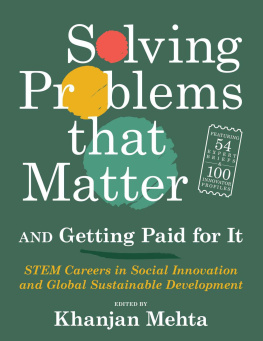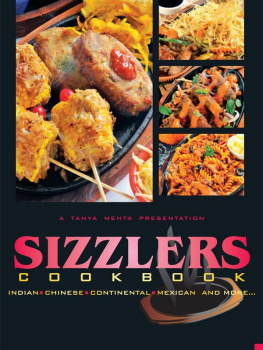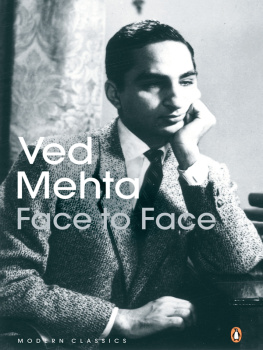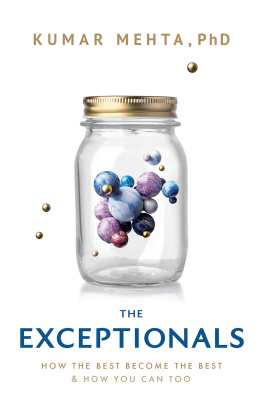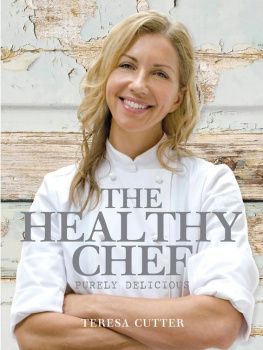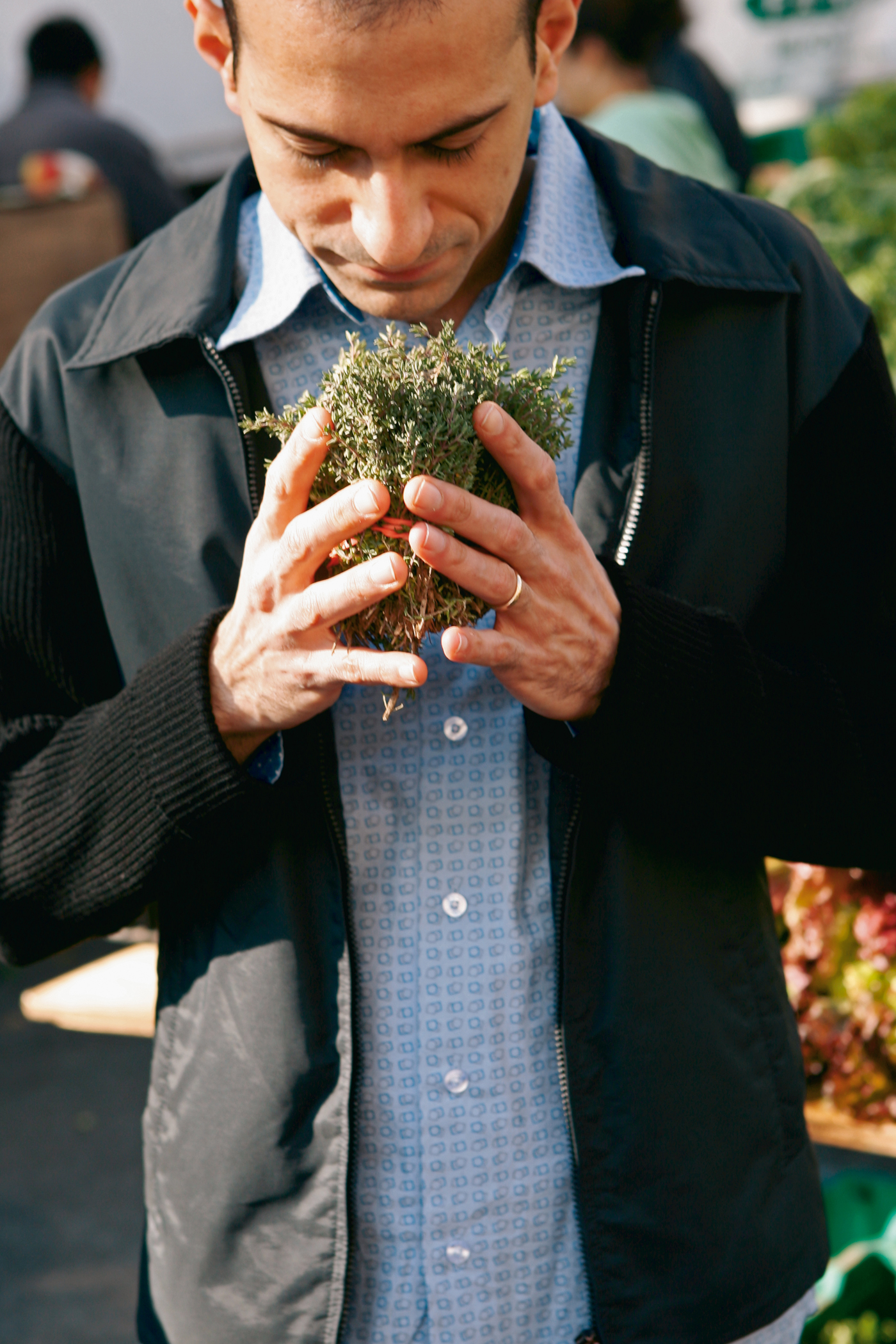TO BALANCE, STRENGTH, LOVE, FAITH, AND HOPE
THE CROWDED STREETS OF BOMBAY REGULARLY OVERFLOW WITH festivals, and the roadside marketplaces leave a smell of spices hanging in the air. As a child growing up there, I was too close to the culture to notice most of its peculiarities, but I was always sensitive to the particular significance of food.
I wish I could start by telling you that at age fourteen I scrubbed the dishes at a French restaurant, and at age sixteen I slogged away in a kitchenor, even better, that my grandmother and I cooked together for long hours in the kitchen. That was not the case.
We had cooks serving us at home. My mother and my sister, Firoza, absolutely detest cooking. And yet, on the rare occasions when she entered the kitchen, Mum dished out some incredible traditional fare, and I learned some very basic concepts: why dishes are made the way they are and what health benefits are provided by ingredients in the ayurvedic tradition.
According to common practice, each component of the typical diet has a specific effect on the body; therefore, food is a typical means of addressing many medical conditions. Walnuts, for instance, are eaten to alleviate backaches, and fennel promotes digestion. Fresh coconut water is consumed every day for its tremendous health benefits, as well as a spoonful of honey in warm water every morning and with a spoonful of cognac at night to fight a cold. Some foods are thought to have so many positive effects that their regular consumption is considered essential; these include avocado, honey, pomegranate, blueberries, and grapefruit.
Canned or prepared foods were almost unimaginable to me and were more expensive than fresh foods anyway. We drank fresh-squeezed orange juice. Milk was available in bottles, but I grew up drinking fresh milk, which had to be boiled every day and had a shelf life of just about two days. Fresh bread, fish, and eggs came to our doorstep daily. McDonalds was not in my vocabulary, and recycling was a way of lifea man came to our door and bought everything from newspapers to bottles to empty plastic pens.
This culture was governed by rules describing how and when certain foods should be eaten. These mantras needed to be followed at home and at school, and there were consequences for breaking them (on occasion, I was even caned in school). Not until years after I had left India did I learn to splurge and indulge my culinary whimsand of course, there is no better country than the United States to learn and practice splurging and indulging! This is the origin of the title Mantra: The Rules of Indulgence , which reflects the ayurvedic emphasis on balance: in this case, a balance of hot and cold, of Indian and American cultures and foods, of rules and indulgence. We all know that sugar and chocolate are not ideal nutritionally, but they simply need to be balanced with some fresh fruit. The aryuvedic principles and health benefits of many ingredients are described here just as they were instilled in me by my grandparents, parents, other relatives, and friends.
Although this background gave me an expansive historical perspective on food, I also wanted to build on the traditional identity of each ingredient to create a complete profile. By adopting other considerations, whether simple (taste, color, smell) or more complex (history, nutritional value, aesthetics), I wanted to reveal a much wider range for most ingredients and find new, exciting applications that had never before been imagined.

Thus, when searching for a career, I decided to train as a chef. Although I was already well into my studies for a sociology degree at the University of Bombay, I enrolled in a four-year program at a hotel management school. I was soon convinced I had found the right path, and after graduation I moved to New York to study at the Culinary Institute of America (CIA).
The CIA gave me a broad set of new skills that transformed my unfocused passion for cooking into the disciplined work ethic that a restaurant kitchen would require. When I left school, my first joba nine-month internship at LAbsintheoffered me a chance to round out my remaining rough edges. From there, I joined the staff of Typhoon Brewery and worked under Patience Kamen and Eric Hubert. Six months later, Jean-Georges Vongerichten opened his namesake restaurant, and I took a second job working for him. Under this arrangement, I worked from eight AM until five PM at Typhoon Brewery, and then from five-thirty to midnight at Jean-Georges, seven days a week. Though exhausted by this schedule, I was committed to surviving it for at least a year. I was convinced that if I could withstand this kind of pressure, I would become a more seasoned and versatile chef.
I was rewarded for my dedication with the position of pastry chef at Mercer Kitchen, a new restaurant that Jean-Georges opened in SoHo, where I was allowed to design my own menu. I produced dishes that I knew would be crowd-pleasers: Roasted Figs Bathed in Port and Honey was an immediate hit, as was Sugar-Brushed Stone Fruit Bruschetta.
My Pineapple Cake was singled out in Ruth Reichls review in the New York Times as epitomizing the Mercer Kitchen at its very best. I stayed at Mercer Kitchen for a year and a half and then, during the whirlwind years that followed, worked in a number of restaurants including Union Pacific, Virot, Compass, Aix, and Sapa, and now my own restaurant, Graffiti.
Over the years, I became comfortable enough as a chef to return to my original focus on individual ingredients and my belief that these could be pushed beyond their traditional roles. I reached back to the past, drawing on the spices and herbs that I knew from childhood, to create dishes such as Fennel Ice Cream, Jasmine-Glazed Doughnuts, and Aloe Consomm. With each, I sought to demonstrate the unexpected range of ingredients, even in realms from which they had once been banished. Though most of these unusual plates were very well received, some aroused confusion and even scorn, particularly my Licorice Panna Cotta, Beet Sorbet, Salty Tapioca, and Vegetable Cake.
Because most of these experiments were successful, however, I was able to launch partistry.com, an event-management company plus online business that sells chocolates, confections, and teas, especially in exotic flavors, from around the world. My company has become known for its Kama Sutra chocolates, which are filled with herbed aphrodisiacs and painted with provocative images from the famous book. Partistry has also sponsored numerous cooking classes in New York kitchens, to spread an appreciation of essential flavors and reintroduce them outside the realm of desserts. In my new restaurant, Graffiti, I am able to give free rein to my ideas.

One of my good friends, Didier Virot, who is passionate about wine, would always summon me when he opened an interesting bottle: J, come here if you do not want to die stupid. He would help me appreciate the fascinating aroma and flavors. This is the spirit that I want to embrace in this book.




